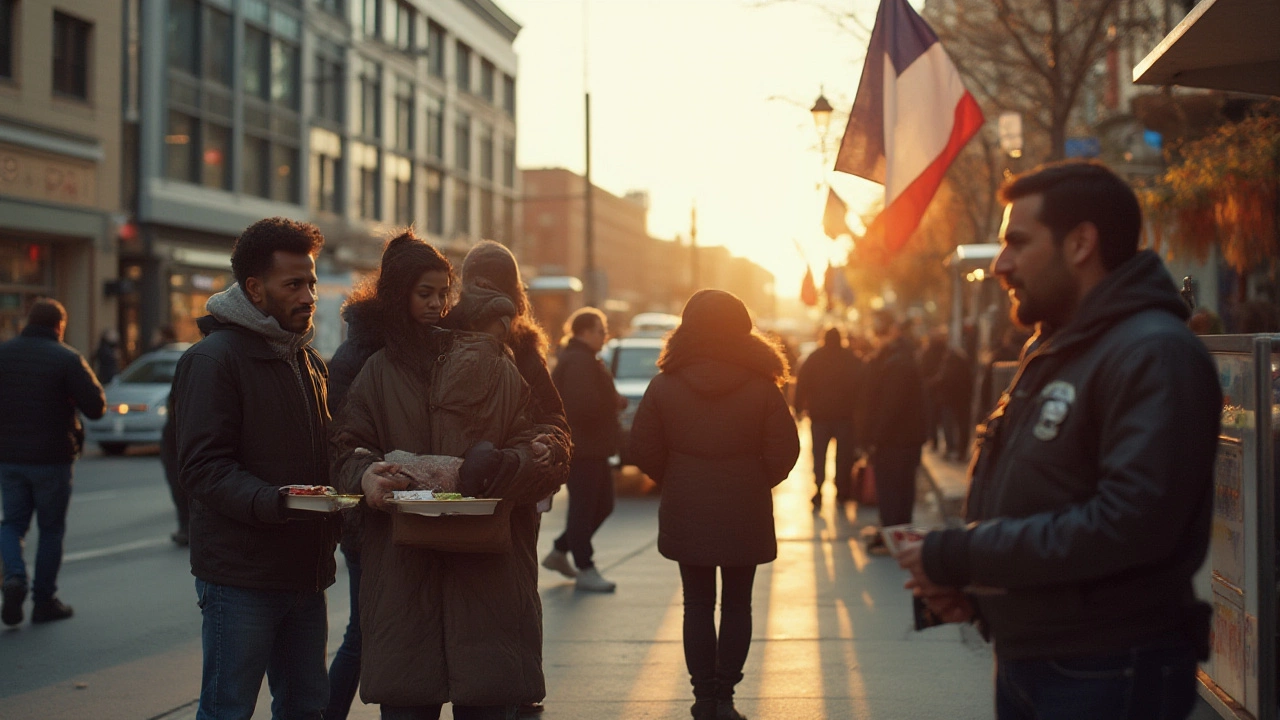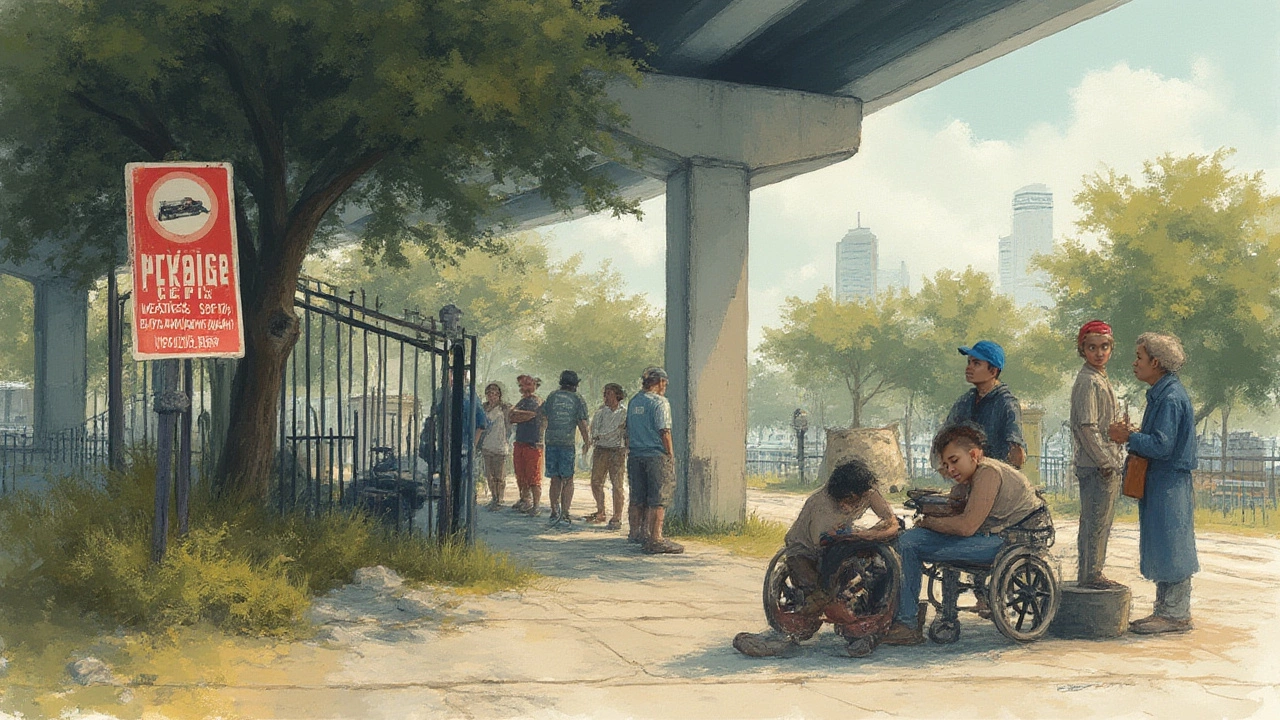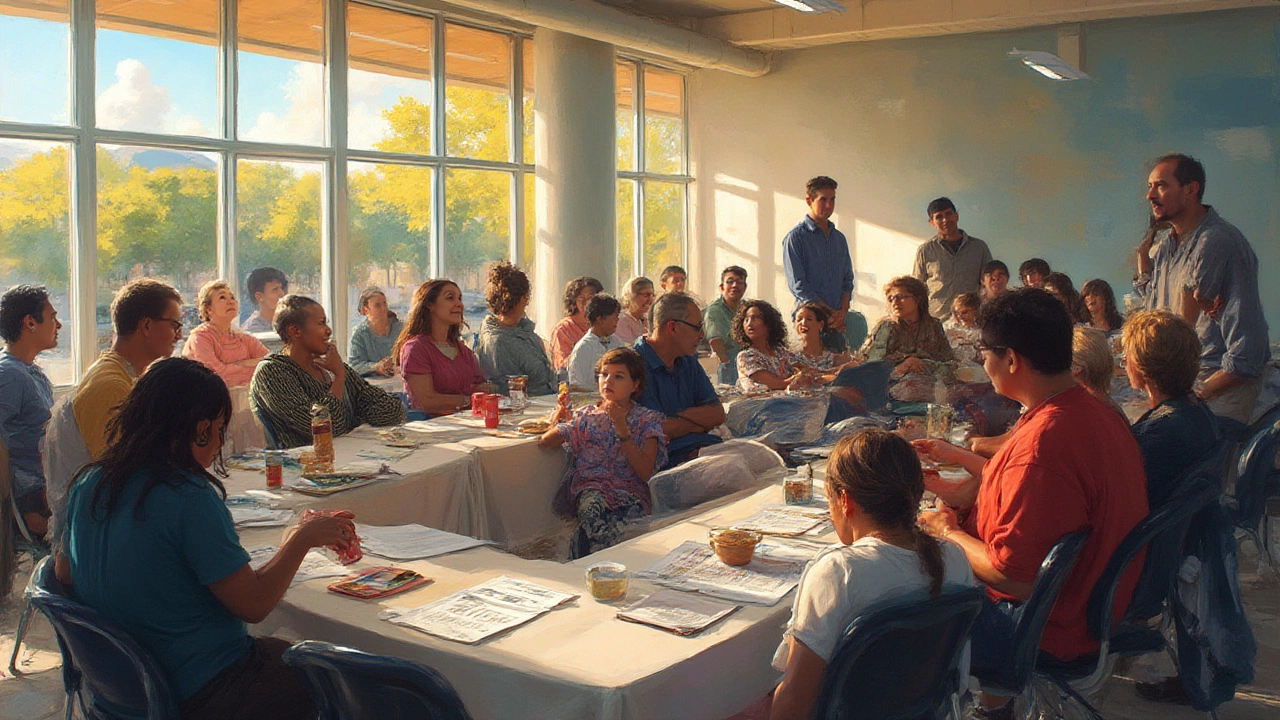Texas Homeless Law 2025: What Changed and How It Affects People on the Street
 Jul, 26 2025
Jul, 26 2025
Picture this: overnight camps along a rainy stretch of Austin’s Riverside Drive, blue tarps fluttering where families once tried to hide from police and thunderstorms. Now, look at 2025—the stories, faces, and tents are changing faster than you’d think. Texas, a state that loves its big gestures, decided this year to shake up its homeless laws again, and it’s not just politicians doing the talking. People living on the street, volunteers with food packs, the regular commuters—they’re all caught in the middle. If you’ve ever wondered who gets to rest safely, or why people keep moving despite everything, keep reading.
Breaking Down the New Texas Homeless Law
The Texas legislature passed House Bill 4302, and Governor Abbott signed it on June 17, 2025. This law builds on the 2021 public camping ban, but with fresh rules and teeth. What’s the headline? The new law doesn’t just target tents—it wraps in additional limits, new penalties, special "safe zones," and throws in state-mandated support avenues. Before, Dallas and Austin had their own slightly different takes on camping bans. Now there’s a clearer, statewide standard—if you’re outside a designated safe zone, pitching a tent, making shelter, or lying down in a public space can lead to a Class C misdemeanor. Sound harsh? Lawmakers argue this encourages homeless individuals to use official resources. Opponents say it just makes survival riskier in overcrowded shelters.
But there are fresher layers this time. For instance, cities with more than 100,000 people must now create at least two "sanctioned encampment zones" where camping is allowed if shelters are full. The law also says that city police can’t clear people from these safe zones unless the city proves it has real space in emergency housing or transitional support—so no easy sweeps at midnight. Get this: every major city is required by September 1st, 2025, to post online maps of their sanctioned zones, plus offer public transit vouchers for unhoused folks to reach them. If you’re found camping outside these areas, you’ll be warned, and if you return within 30 days, you’re looking at a ticket or court summons. Repeat four times in a year? The law says you can be ordered into a new "restorative court program," which is designed to hook more people up with case managers and long-term aid.
A few numbers stand out in the bill’s text. First, funding: the new law carves out $25 million for cities to set up safe zones, fences, security, and portable toilets. Dallas and Houston get the biggest slices, since their unhoused populations grew by over 8% this year alone. Critics warn that may not be enough—though the restored rental relief program (renewed for 2025 with $100 million in state and federal cash) got much of the attention when the bill passed.
Another key update: for families with children caught camping, Child Protective Services can step in if conditions are deemed hazardous or a child is not enrolled in school. There’s a process now—caseworkers review the family’s needs and connect them with school liaisons, trying to avoid instantly breaking up families (a huge point after last year’s protests).
Folks who run private shelters told the Houston Chronicle last March they expect the sanctioned zones to fill up within days. One of those numbers—more than 42,000 people in Texas are considered homeless as of January 2025, with nearly 4,200 counted as children. An estimated 65% have no access to stable shelter on most nights, according to the state’s annual point-in-time count.
| City | Homeless Population (2025) | New Safe Zones | Shelter Beds Available |
|---|---|---|---|
| Houston | 7,800 | 3 | 2,100 |
| Dallas | 5,200 | 2 | 1,700 |
| Austin | 4,300 | 2 | 600 |
| San Antonio | 3,900 | 2 | 950 |
The table above only hints at the pressure every city feels—number of people far outstrips shelter beds, which means the safe zones become the only alternative for thousands. Don’t forget, the law also says cities can’t just shuffle zones to the outskirts—at least one has to be within five miles of downtown. Local businesses scrambled to lobby for distance requirements, but didn’t win on that point.
Side fact: the law carves out an exception for people with severe mental illness. If police or outreach workers find someone in visible distress, they must call for a mental health crisis team before any citation is given. This was a big win for mental health advocates after months of debate. In practice, it’s forcing some cities to hire more case workers and rethink how they handle police calls to encampments.
If you want the exact language, here’s a core quote from the bill text: “No city may criminalize sleeping or resting in a sanctioned encampment zone provided it meets all minimum safety and sanitation standards.” Translation: you’re safe from tickets in these zones as long as shelters are full and the area has potable water and toilets. For folks living on the street, even that narrow safety net matters.

Impact on People Experiencing Homelessness
If you talk to anyone working with Austin’s outreach teams, they’ll use the same word for the new law: complicated. For some, these safe zones finally mean knowing where you can sleep tonight without looking over your shoulder for cops. But not everyone is cheering. Many unhoused folks say the zones are crowded, full of rules, and away from spots where people have jobs or look for work. Food pantries and volunteers hustle to keep up—nonprofits like Caritas of Austin or Dallas LIFE hand out 4,000+ meals a week, but admit there’s never enough to go around.
The old law would let police issue tickets or quickly sweep tents from public spaces, and sometimes folks lost everything. Under the new law, there’s at least a warning system. But here’s a big frustration—many shelters still turn people away if they don’t have ID, a negative drug test, or traveling companions (think moms with sons over 12, couples, or people with pets). The sanctioned zones don’t always solve this, so families sometimes split up just to have a roof over their heads at night.
I talked to Orla’s kindergarten classmate’s family last week. Their dad, now in the sanctioned zone outside downtown Austin, says, “It’s safer but not easy—we get wake-up calls from police at dawn, but at least our tent isn’t thrown away.” On the other hand, his sister avoids the zone entirely, worried about reported harassment and long waits to get into the portable showers. This divide pops up in every city. Shelters now have bigger crowds since police encourage (some say pressure) every encampment dweller outside the safe zones to move in or relocate, and total shelter requests skyrocketed by 38% this spring. The competition for a bed gets tough, and folks with jobs say cashing your paycheck doesn’t mean you can rent a room anymore—one-bedroom leases in Houston went up 11% this year, to $1,480/month on average. Most minimum wage workers bring home less than $1,300 a month.
For families—especially women with kids—school enrollment is now tied directly to a spot in a safe zone. School liaisons started holding pop-up sign-ups at the zones. One tip: if you know someone struggling, they can ask for an "Educational Rights Advocate" from their district, who helps make sure their kids aren’t dropped from classes due to an unstable address. The Texas Homeless Education Office website explains these rights and helps fast-track registration, especially during sudden moves.
Job seekers hit walls too. Without an address, most employers (even for hourly restaurant shifts) want some proof of residency. One workaround: the new law requires sanctioned encampments to offer daily mail pickup and phone charging stations, which gives some folks just enough to apply and stay in the hiring loop.
People with disabilities or chronic illness are a whole different struggle. The safe zones publish lists of on-site medical services—usually a weekly mobile health clinic, or monthly mental health screenings, but waits are long and coverage patchy. A tip from an advocate: volunteers suggest folks register with the statewide Homeless Management Information System (HMIS) using mobile intake events; this speeds up access to food card referrals, prescription help, and eventually subsidized housing vouchers.
Still, those waiting times can take months, and staying healthy or finding work from a crowded encampment isn’t just a hurdle—it’s like trying to do a puzzle in the dark. People adapt, but many are tired, angry, or just ready for something different. Cities are giving out more transit cards to move folks toward locations with more openings, but that comes with its own risks—moving away from your support network, losing touch with old friends, sometimes even leaving school behind.

How Texans and Communities Are Responding
These legal changes don’t unfold in a vacuum. Faith groups, veteran’s orgs, school liaisons, and libraries have all jumped in. In Austin, churches organize weekly meals in or near the safe zones. Houston’s Food Not Bombs tries to bridge gaps when city supply trucks run late. Some neighborhoods started their own "buddy system"—pairing local volunteers with new arrivals, just to check in and help sign up for essentials like state benefits and bus passes.
The new law makes sure that anyone cited under the camping restrictions is connected (at least in theory) with a caseworker—though the real-world follow-up depends a ton on city budgets. Some good news: libraries keep providing address services for job applications, and more spots now let folks print paperwork or use computers for free.
For teens and young adults, youth organizations have rolled out mobile drop-in vans—think hot showers, snack bags, safe space to talk. The problem is outreach doesn’t always keep up. Most "runaway" teens still say they worry about being found and ticketed, so they don’t always trust these services. Cities are trying to partner with local TikTok creators and schools to push info out right where youth already are.
There’s another side—plenty of locals still push city hall for stricter bans, or ask for zones to be nowhere near businesses. Shop owners in Austin fought hard this spring to move one heavily used zone out of a retail area but lost the case under the new law’s requirements. On the flip side, some neighborhoods started tiny home pilot projects, chipping in funding and elbow grease to build micro-shelters on church or city-owned land. One collective in Dallas turned a vacant strip mall into 18 insulated cabins with heat, and now tracks dozens of people graduating from the zone into steady work and long-term apartments.
If you want to help, here’s what actually matters on the ground:
- Don’t hand out cash directly unless it’s urgent—nonprofits say supplies like water, phone cards, and first aid get people through the hardest days.
- Most cities’ "311" hotlines now handle both illegal encampment tips and volunteer sign-ups; use that line to ask what’s most needed near you.
- Don’t assume police know every aspect of the new law—sometimes confusion still leads to wrongful citations. If you see someone being moved on, ask if they want a witness or need a ride to a safe zone.
- Schools always need extra backpacks, pencils, and school shoes for unhoused kids. Donations go fast and reach families directly.
- Encourage local businesses to hire through job fairs at safe zones—many cities organize these every month, and it helps connect people with steady shifts and second chances.
And here’s something I learned as a mom: Orla’s school posts regular updates on how families can ask teachers for help with breakfast, summer camp referrals, and after-school care if they’re facing housing struggles. Just sending a note to your child’s school counselor can be the start that opens up a lot more support than people might expect.
The fight over how Texas should handle homelessness is still going, and it isn’t always clean or fair. The Texas homeless law of 2025 swings between giving a few more rights inside controlled zones and doubling down on penalties elsewhere. Some see progress, others see more people on the edge. But every person you pass on the street has their own story about surviving the new rules. If there’s one truth that holds, it’s that the law is changing fast—and so are the ways Texans try to help their neighbors find a way back into homes of their own.